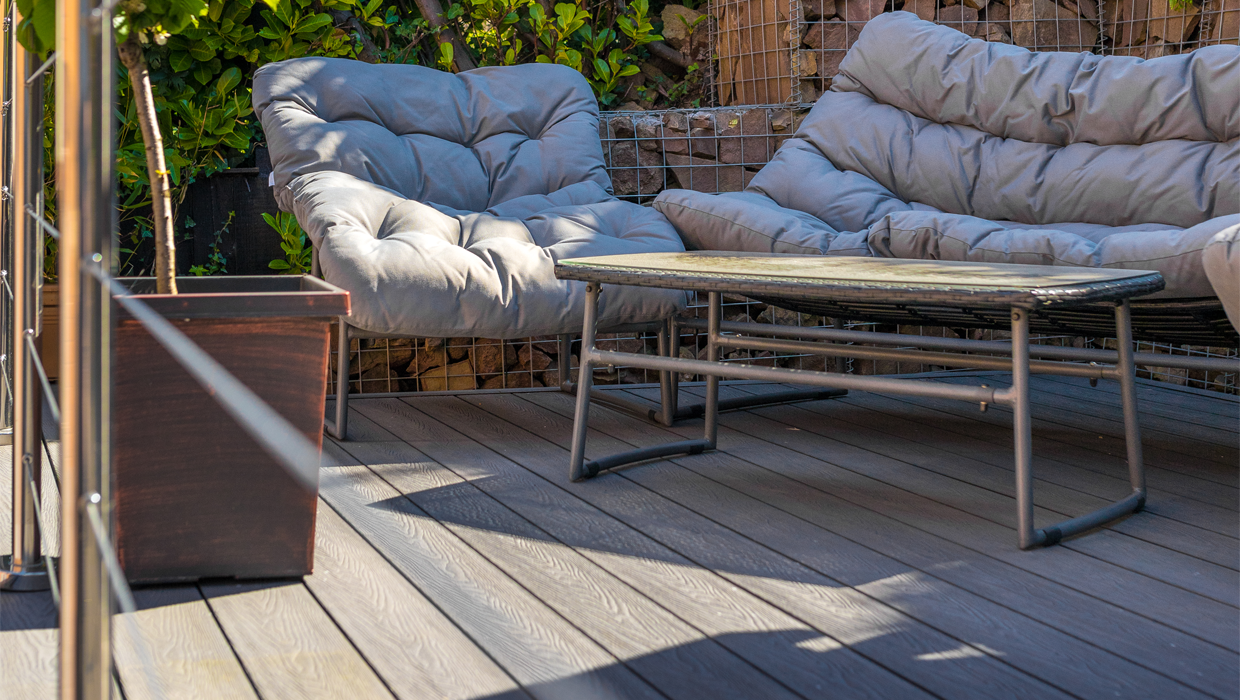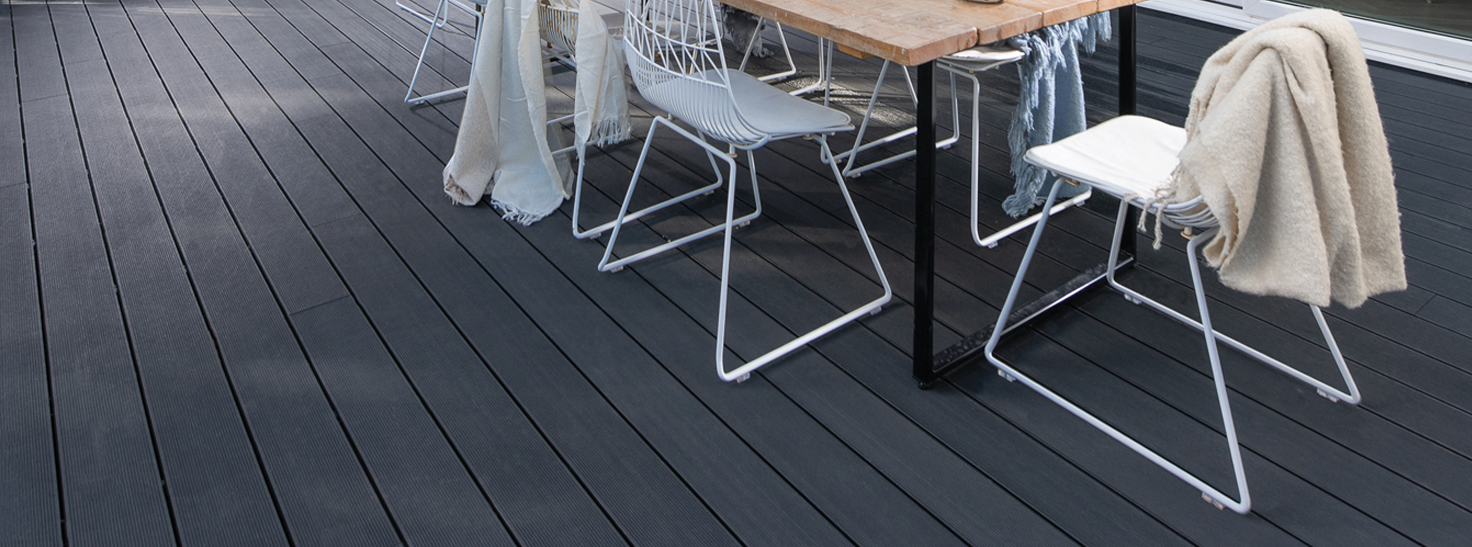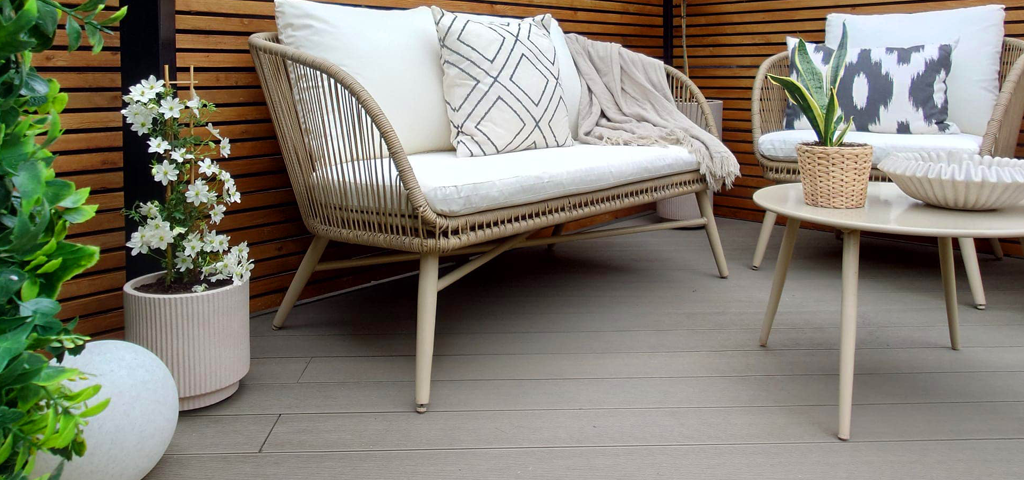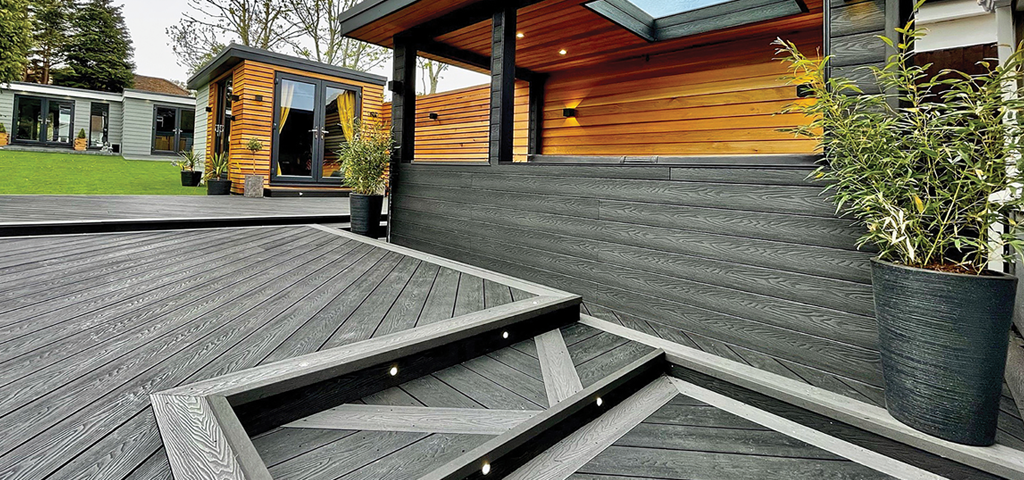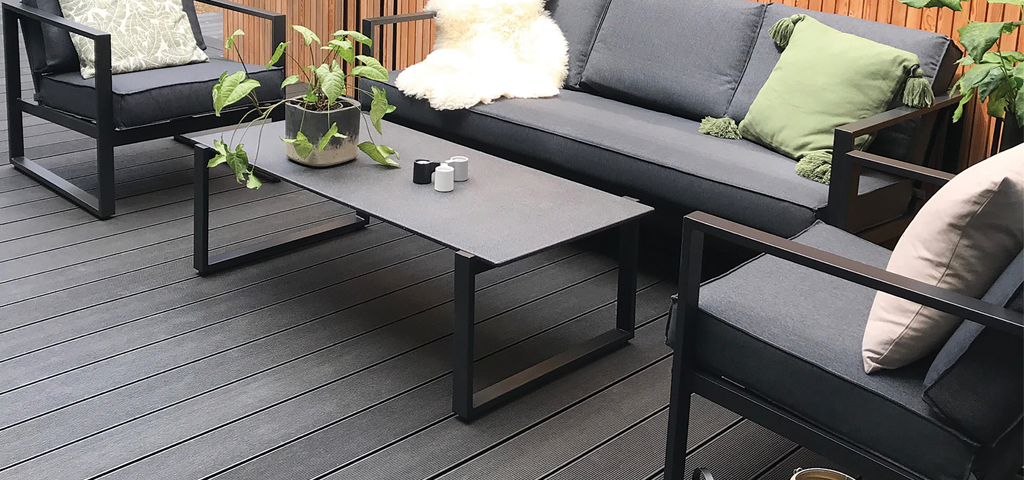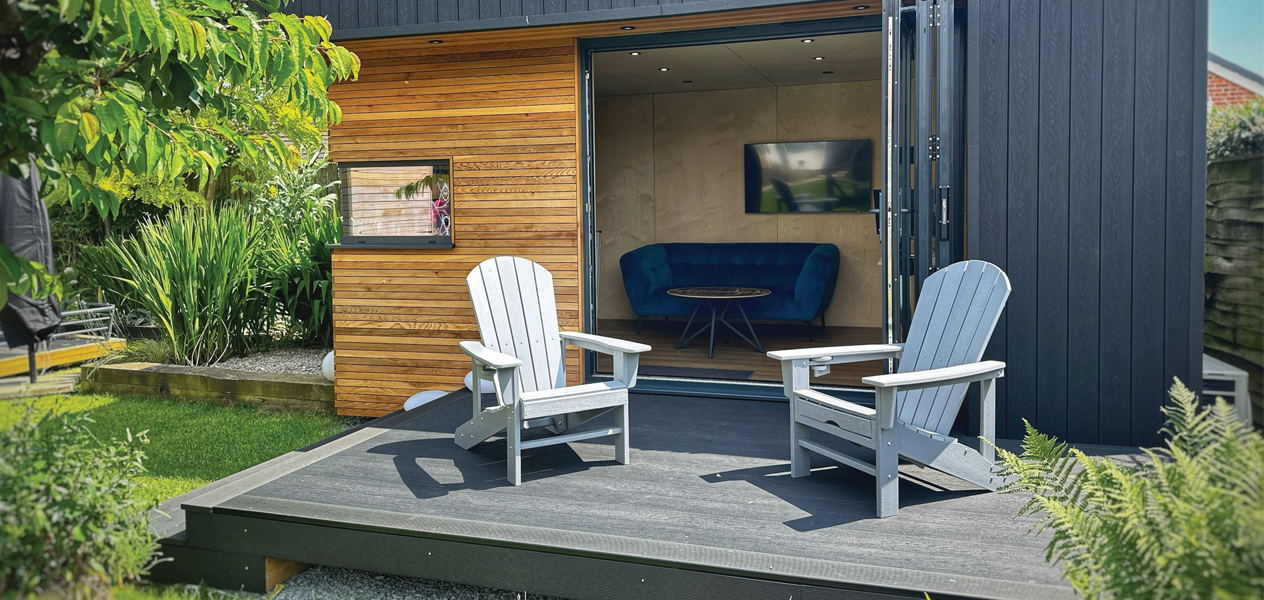In recent years, more and more homeowners have started to invest time, care, and money into transforming their gardens. No longer just an overlooked outdoor space used for a handful of days during the summer, gardens are now seen as valuable extensions of the home—ideal for social gatherings, family meals, or even relaxing in a hot tub. And when it comes to enhancing your outdoor space, decking remains one of the most popular and practical solutions.
While there are several types of decking materials available, this article focuses on composite decking-specifically, the benefits and differences between hollow and solid composite decking boards. Whether you're planning a DIY project or weighing up options for a professional installation, we'll help you determine which type of board best suits your needs.
Understanding Composite Decking
For over a century, wood decking has been the go-to material for decking across the globe. But in the 1990s, a combination of technological innovation and growing demand for sustainable, low-maintenance alternatives helped pave (or should we say, deck) the way for composite decking to step into the spotlight.
So, why choose composite decking over traditional wooden decking? Here are just a few of the key benefits:
Creativity: With so many colours and styles to discover, composite decking helps you achieve a truly personalised outdoor space. For added versatility, our range of reversible Cladco composite decking boards features two distinct designs on either side. You can choose between a more traditional woodgrain effect for that real wood look or a sleek, thin grooved finish for a more contemporary aesthetic, depending on which side up you install the board.
Low Slip Properties: Compared to timber decking, composite decking is designed to reduce the risk of slipping in wet or wintry conditions. For added safety, if you're installing Cladco composite decking boards with the narrow-grooved, slip-resistant pattern side facing up, positioning the grooves perpendicular to walkways and doorways can further minimise slip potential.
Low Carbon Footprint: Composite decking is made from a blend of materials, typically wood fibres and plastic, with the ratio varying by manufacturer. At Cladco, our composite decking boards are manufactured using 60% recycled hardwood fibres and 40% recycled plastic, making them an environmentally responsible choice.
Environmentally friendly: Composite decking is an extremely eco-friendly decking material. All material used in Cladco Composite Decking is 100% recycled and FSC® certified, learn more about our environmental journey here.
Low Maintenance: Unlike wooden decking, which demands the application of wood treatment, sealants, and constant rigorous upkeep to maintain its appearance, composite decking offers a hassle-free solution that requires very little maintenance.
Will not rot, warp or split: Thanks to its robust construction and combination of wood fibre and plastic, composite decking is far less likely to deteriorate over time.
UV light resistance: Although UV will cause slight colour fading over time, composite decking has a much higher resistance to UV compared to natural timber, meaning it will retain its colour for longer.
Resistant to insects and pests: While insects are a common issue when it comes to timber decking, they struggle to penetrate composite materials due to their dense construction.


Comparison: Hollow vs. Solid Composite Decking Boards
Pros and Cons
So, you’ve decided that composite decking is the right decking material for you, and you are now wondering whether you should opt for solid composite decking or hollow composite decking. While both options offer similar benefits, the subtle differences between them could be the key to making the right choice for your project.
In terms of similarities, both hollow core and solid core composite decking feature the same benefits:
- Improved stain resistance
- Ideal for wet areas like pool surrounds or hot tubs
- Extremely low porosity
- Resistance to warping, rotting and splintering
- Easy to install
- Have a 15-year warranty, giving you peace of mind
With those shared advantages in mind, let’s now explore where these two types of decking begin to differ.
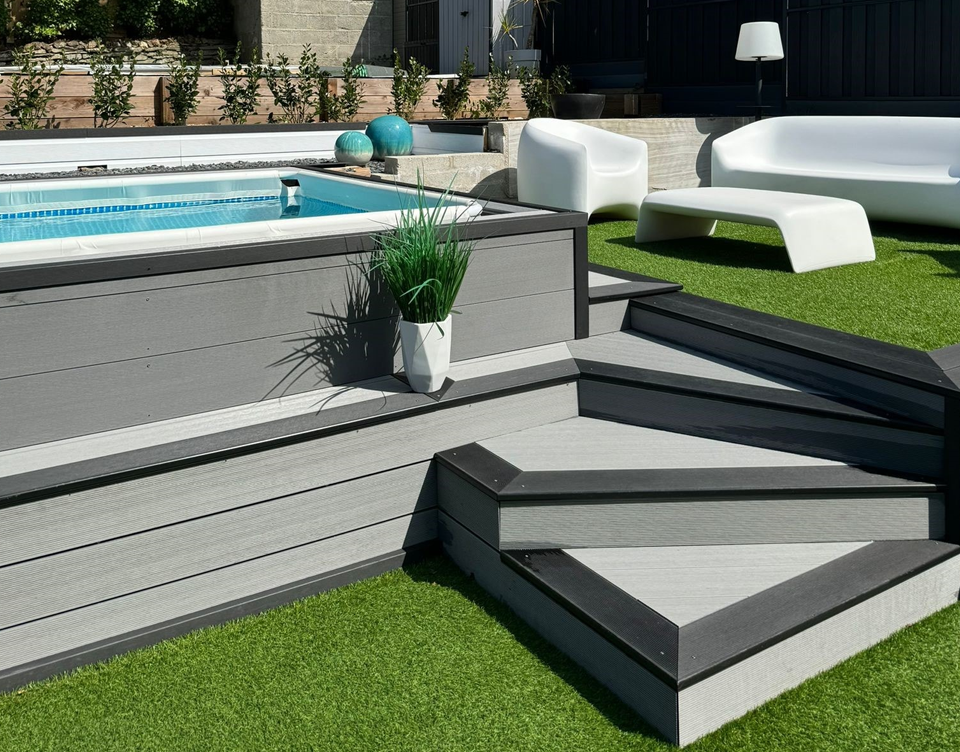
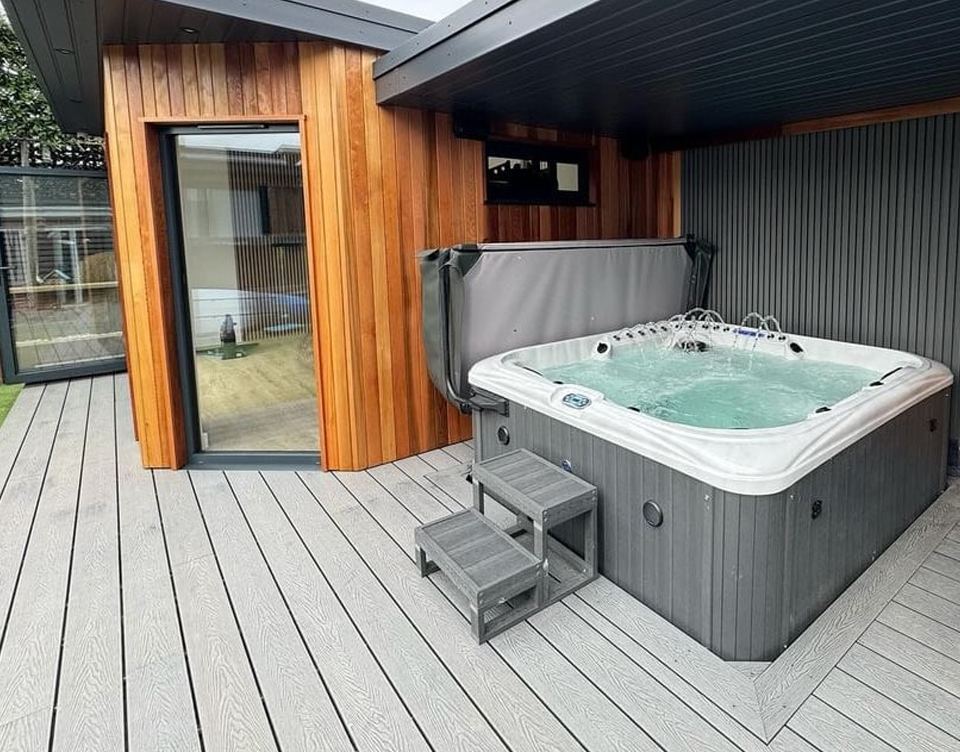
Structure
Hollow composite deck boards feature a honeycomb structure with internal cavities, making them lighter, easier to handle, and more convenient to transport.
Solid composite deck boards, on the other hand, have a fully solid core with no cavities. While this makes it heavier, it also offers a sturdier feel underfoot.
Installation
Hollow composite decking is easier to install due to its lightweight design, making it simple to lift and position with minimal effort. That said, care should still be taken during handling to prevent damage.
Solid composite decking, in contrast, is heavier and may require an extra pair of hands during installation. While less convenient to move, its robust construction means you don’t need to be quite as cautious when handling a solid board.
Appearance
Hollow composite decking boards can sometimes be seen as less visually appealing due to their exposed edges, which may not offer the premium look some homeowners are after. Fortunately, this is easily resolved with our Hollow Composite Decking End Caps, available in a range of standard composite colours, to create a clean and professional finish.
Solid composite decking, on the other hand, delivers a seamless, high-end appearance straight from the get-go - no end caps required.
Thermal Expansion
Hollow composite decking is more susceptible to thermal expansion due to its multiple cavities. As temperatures fluctuate, the boards naturally expand and contract. To avoid issues after installation—especially where boards meet at butt joints—it is essential to follow the manufacturer's spacing and installation guidelines carefully.
Solid composite decking is less prone to thermal expansion, providing a more stable performance in various climates. However, it's still important to follow the recommended installation practices, particularly around spacing at butt joints.
Price Comparison
Hollow composite boards offer the more affordable option, due to less material being used during manufacturing. This is why hollow composite decking is such a popular choice for homeowners who need to work within a budget but don’t want to compromise on quality.
Solid composite decking boards are the choice to make if you wish to achieve a premium, high-quality finish in areas where long-term performance and strength are key considerations.
Performance and Durability
Hollow composite boards are generally less durable than solid boards, making them less suitable for areas with heavy foot traffic or frequent impacts. That said, hollow boards perform exceptionally well in typical garden or domestic outdoor spaces, offering a solid balance of durability, performance, and value.
Solid composite boards feature a denser, more robust design that stands up better to wear, impact, and harsh conditions. These deck boards also provide better sound absorption, making them a popular choice for a commercial project or high-traffic area. With greater long-term durability, solid core boards are especially well-suited to environments exposed to frequent use or extreme weather.
Installation and Maintenenace
Installation Process
To install composite decking boards, you'll need a few basic tools, such as a pencil, tape measure, spirit level, and string to ensure straight lines and a professional finish.
If your boards need trimming, they can be cut to size using standard wood-cutting tools. For the cleanest results, we recommend using a fine-toothed blade.
As for fixing your boards in place, a standard power drill with a PH2 x 65mm Phillips screwdriver bit is ideal for 50mm or 65mm SPEEDDEKZ 316 Stainless Steel Decking Screws. When concealing the support system with composite trims, be sure to use a strong sealant adhesive for a secure, lasting bond, such as CT1 High-Performance All In One Sealant and Adhesive.
It's also important to take proper safety precautions when working with composite decking. Be sure to wear appropriate PPE to protect yourself during installation. Some recommended gear includes:
Dust Mask – Always wear a dust mask when cutting composite boards to prevent inhaling fine particles, which can irritate your respiratory system.
Safety Gloves - Protect your hands when cutting, handling, or installing boards and trims, with a pair of reliable safety gloves, such as Cut-Level 5 Protective Safety Gloves for Decking.
Ear Defenders - If you're using power tools—especially for extended periods—ear protection helps reduce the risk of hearing damage.
For more information on how to install your Cladco composite decking boards, please take the time to read through our helpful Composite Decking Installation Guide here.
While most everyday spills are easy to clean, be mindful that composite is not 100% stain resistant, and certain substances—like strong chemical treatments (e.g. bleach), insect repellents, or sun cream—can mark the surface of your composite decking. Whenever possible, avoid contact with these materials.
Regular cleaning throughout the year is key to maintaining your deck’s appearance. Don’t let mould, dirt, or grime build up—especially during autumn and winter months. Wiping away debris as it appears helps prevent tougher stains later on.
If your decking becomes particularly dirty or affected by algae, a pressure washer may be useful. However, using too much pressure can damage the surface, so always consult your decking manufacturer’s guidelines before proceeding.
When moving garden furniture or heavy plant pots, avoid dragging them across your decking, as this can scratch the surface and affect the overall appearance. Instead, lift and reposition items carefully to help keep your decking looking its best.
FAQs
Is hollow composite decking good?
Absolutely! Thanks to its lightweight design, it's easy to handle and install—perfect for DIYers. It also offers long-lasting performance with minimal maintenance, making it an ideal choice for domestic gardens. If you're a first-time buyer or working with a tighter budget, hollow composite decking provides excellent value without compromising on quality.
Which composite decking is better?
That depends on your specific needs. While both options offer excellent performance, solid decking is generally more robust and durable—making it the better choice for high-traffic areas or long-term use. However, this added strength comes at a higher price point. If you're looking for a cost-effective solution for a domestic garden, hollow decking boards can still deliver great results.
Conclusion
So, when it comes to hollow vs. solid composite decking, which one wins? The truth is—both offer excellent benefits, and the right choice depends entirely on your project’s needs.
If you're after a low-maintenance, easy-to-install decking option available in a variety of colours and styles, either type will serve you well.
For homeowners seeking an affordable, lightweight solution ideal for typical garden spaces, hollow composite decking is a smart and practical choice. On the other hand, if your priority is maximum strength, long-term durability, and enhanced sound absorption - especially for high-traffic or commercial areas - solid composite decking is likely the better fit for you.
Give your garden the love it deserves. Discover our stylish, low-maintenance composite decking - perfect for any project.
